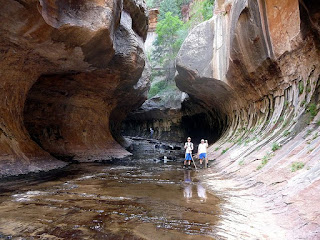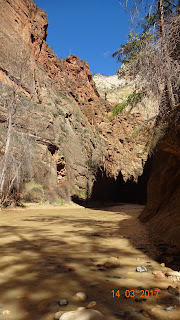இந்த வார நாட்க்குறிப்பு:
26.03.17 பத்திரிகைகள் ஏன் இப்படி இருக்கின்றன?
திடீரென்று இந்த விஷயம் ஏன் ஞாபகத்துக்கு
வந்ததென்று தெரியவில்லை.
1960-களில் பல குடும்பங்களில் வார, மாதப்
பத்திரிகைகள் தொடர்ச்சியாக படிக்கும் பழக்கம் இருந்து வந்தது. ஆனந்த விகடன், குமுதம்,
கல்கி, கலை மகள், கல்கண்டு, குங்குமம், (பின்பு) சாவி, பொம்மை, பேசும் படம், …இப்படிப்
பல. அந்தப் பத்திரிகைகளில் தொடர்கதைகள் மிகவும் பிரபலமாக இருந்தன. பல எழுத்தாளர்கள்
பிரபலமாவதற்கு அந்தப் பத்திரிகைகள் உதவியாக இருந்திருக்கின்றன. பத்திரிகைகளும் பெருகின.
திரு. கல்கி, அகிலன், நா. பார்த்தசாரதி, பாலசுப்பிரமணியன், சா. விஸ்வனாதன், பின்னர்
சுஜாதா, ரா. கி. ரங்கராஜன், ஜாவர் சீதாராமன் அதற்கும் பின்னர் இந்துமதி, சிவசங்கரி…இப்படிப்
பலரின் தொடர் கதைகள் வழக்கமாக ஒன்று மாற்றி ஒன்றாக பல பத்திரிகைகளில் பிரசுரிக்கப்பட்டு
வந்தன. அந்தத் தொடர் கதைகள் வாசகர்களிடையே மிகவும் பிரபலமாகப் பேசப்பட்டும், விவாதிக்கப்பட்டும்
வந்தன. (ஏதேனும் முக்கியமான பெயர்கள் விடுபட்டிருந்தால் மன்னிக்கவும்) எல்லாப் பத்திரிகைகளிலும்
பல சிறு கதைகள் படிப்பதற்கு சுவாரசியமாக இருந்தன. சித்திரக் கதைகள் இருந்தன. பயணக்
கட்டுரைகள் இருந்தன. ஒவ்வொரு ஆண்டும் வெளி வரும் தீபாவளி மலருக்கு பலர் ஆவலுடன் ஏங்கி
நின்றனர்.
ஆனால், எல்லாக் குடும்பங்களாலும் எல்லா
பத்திரிகைகளையும் விலை கொடுத்து வாங்கிப் படிக்க முடியாத நிலை. பெரும்பாலான குடும்பங்கள்
நடுத்தர வர்க்கம். அதனால் ஒரு சில தனி மனிதர்கள் எல்லாப் பத்திரிகைகளையும் –தேவைக்கேற்ற
படி - ஒன்றிரண்டு பிரதிகளை விலைக்கு வாங்கி வைத்து பல வீடுகளுக்கு மாதச் சந்தாவாக ரூபாய்
பத்தோ இருபதோ வாங்கிக் கொண்டு இரண்டு அல்லது மூன்று நாட்களுக்கு படிப்பதற்கு வாடகைக்குக்
கொடுப்பார்கள். அந்த வியாபார முறை மிகவும் பிரபலமாக இருந்தது. சிறுவர் முதல் வயதில்
முதியவர்கள் வரை எல்லா வர்க்கத்தினரும் படிக்கும் படியாக பொதுவாக எல்லாப் பத்திரிகைகளிலும்
ஏதேனும் விஷயம் இருக்கும். ஏதேனும் ஒன்றிரண்டு சினிமாச் செய்திகள்தான் அவற்றில் காணப்படும்.
சினிமாச் செய்திகள் படிக்க வேண்டுமென்றால் பொம்மை, பேசும் படம் போன்ற அதற்கென்று தனிப்பட்ட
பத்திரிகைகளை வாங்கிப் படிக்க வேண்டியதுதான். பத்திரிகைகளில் வரும் தொடர்கதையை பத்திரமாக
பிரித்தெடுத்து சேர்த்து வைத்து ‘பைண்ட்’ பண்ணி வைப்பார்கள் பல வீடுகளில்.
இன்றைக்கும் சிறிய ஊர்களில் இந்த வியாபார
முறை தொடர்ந்து நடைபெற்று வருகிறது என்று கேள்வி.
பத்திரிகைகள் படிக்கும் பழக்கம் மிகவும்
பரவலாக இருந்தது.
பின்னர் ஒரு சமயத்தில், மக்களின் சினிமா
மோகம் அதிகரிக்கத் தொடங்கவே பத்திரிகைகளும் தங்கள் பாணியை மாற்றிக் கொள்ளத் தொடங்கின.
அதில், குமுதம் பத்திரிகை முன்னோடியாக இருந்தது என்று நினைக்கிறேன். கொஞ்சம் கொஞ்சமாக
சினிமா பற்றிய செய்திகள் அதிக பக்கங்களை ஆட்கொளத் தொடங்கின.
பின்னர் வந்தது தொலைக்காட்சி. பத்திரிகைகள்
படிக்கும் பழக்கமும் தொலைய ஆரம்பித்தது. ஆரம்பத்தில் தூர்தர்ஷன் மட்டுமே இருந்தது.
வேறு வழியில்லாமல் மக்கள் புத்தகங்களையும், பத்திரிகைகளையும் மறந்து தொல்லைப் பெட்டியின்
முன்னே மணிக் கணக்காக நேரத்தை செலவிடுவதை தொடங்கினார்கள். பின்னர் 1990-களின் ஆரம்பத்தில்
போட்டிக்கு பல தனியார் தொலைக்காட்சி சேனல்களை அனுமதித்தார்கள். பத்திரிகைகள் படிப்பது
நின்றதோடல்லாமல் மாணாக்கர்கள் பாடம் படிப்பதும் நிற்கத் தொடங்கின. கவனம் சிதறத் தொடங்கியது.
தனியார் தொலைக் காட்சியின் மோகத்தில் பாடத்தை கோட்டை விட்ட கதை எங்கள் வீட்டிலேயே நடந்திருக்கிறது.
பின்னர் வந்தது கம்ப்யூட்டரும், செல்ஃபோனும்.
போச்சு… எல்லாமே போச்சு.
பத்திரிகைகளில் வரும் கதைகள் பஸ் டிக்கட்
அளவுக்கு குறுத்துப் போயின. சினிமாக்களும், விளம்பரங்களும் பத்திரிகைகளை முழுமையாக
ஆக்ரமித்துக் கொள்ளத் தொடங்கின. காலை எழுந்ததும் பல் கூட துலக்காமல் செல் ஃபோனில் எஸ்.எம்.எஸ்
தகவல் பரிமாற்றங்களில் சிறுவர்களும், இளைஞர்களும் ஈடுபடத் தொடங்கினர்.
பின்னர் வந்தது Social Networking வலைத்
தளங்கள். Orkut, Facebook, Twitter…இன்னும் எத்தனையோ…எல்லோரும் பித்து பிடித்து அலைகிறார்கள்.
வயது வித்தியாசம் இதில் எதுவும் கிடையாது.
பத்திரிகைகள், புத்தங்கள், செய்தித் தாள்கள்
இதையெல்லாம் படிப்பது பழமை விரும்பிகளுக்கு மட்டுமே என்றாகி விட்டது. ஆனால், இன்று
வருகின்ற பல பத்திரிகைகளில் பெரும்பாலும் சினிமா சம்பந்தமான செய்திகள் அதிகமாக காணப்படுகின்றன.
கிசு கிசுக்களும், செய்தி என்ற பெயரில் விலாசம் தெரியாத நிருபர்களின் கருத்துக்கள்,
கவர்ச்சிகரமான புகைப்படங்கள் … இவைகள் தான் அதிகம் காணப்படுகின்றன. சிறு கதைகள், தொடர்
கதைகள் அபூர்வம். நீளமாக எழுதினால் யாரும் படிப்பதில்லை. எல்லாமே ஒன்றிரண்டு வரிகளில்
சொல்லி விட வேண்டியிருக்கிறது.
பல பத்திரிகைகள் இணையதளத்திலும் – சில
இலவசமாகவும், சில சந்தா கட்ட வேண்டியதாகவும் – கிடைக்கின்றன. எது தேவையோ அதை மட்டும்
படித்தால் போதும். புத்தகங்களைப் பாதுகாக்க வேண்டிய அவசியமில்லை. ஒரு பத்திரிகையை கையில்
எடுத்தால் அதிக பட்சம் பத்து நிமிடங்களில் பார்த்து முடித்து விடலாம். பாதிப் பக்கங்களில்
விளம்பரங்கள்தான் இருக்கின்றன. மக்களும் ‘பிசி’யாக இருக்கின்றனர். இருந்தும் புதிது
புதிதாக பத்திரிகைகள் வருகின்றன. பல பத்திரிகைகளில் வரும் கட்டுரைகளைப் படித்துப் பார்த்தால்
மேலெழுந்தவாரியாக எழுதியது போலத் தோன்றுகிறது. மக்கள் கையில் பணப் புழக்கம் அதிகமாக
இருக்கிறது. எப்பொழுதும் பறந்து கொண்டிருக்கிறார்கள். தரமான பத்திரிகை (அப்படி இருந்தால்)
படிப்பதற்கு எங்கே நேரம்?
காலம் மாறுகிறது. இந்த நிலையும் மாறும்.
நம்புகிறேன். பத்திரிகைகள் எல்லாமே மோசம் என்று நான் சொல்வதாக எடுத்துக் கொள்ள வேண்டாம்.
அங்கங்கே நல்ல தரமான பயனுள்ள கதை, கட்டுரைகள் இன்றும் வந்து கொண்டுதான் இருக்கின்றன.
உதாரணத்துக்கு, நெல்லையிலிருந்து வெளி வரும் தினமலர் வாரமலரையும், சிறுவர் மலரையும்
அடிக்கடிப் படித்திருக்கிறேன். ஓரளவு நன்றாகவே இருக்கிறது.























































